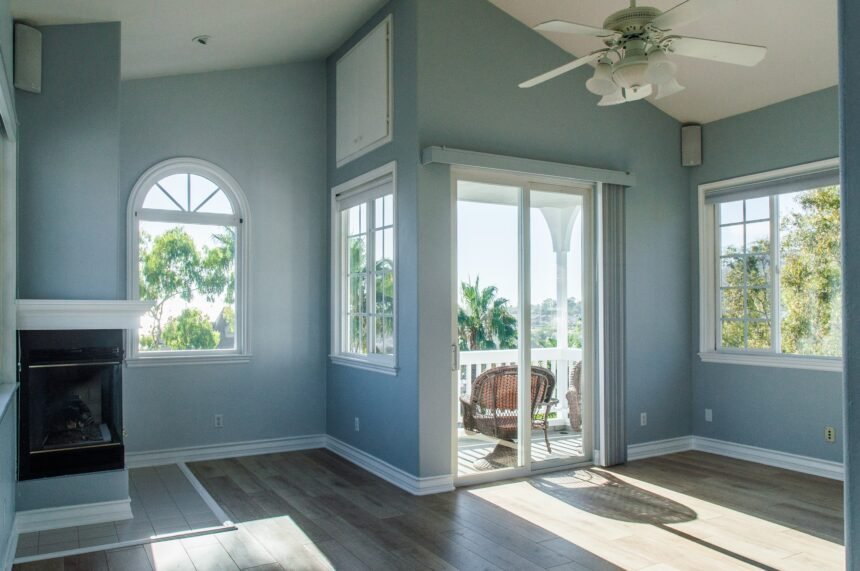The security of our homes is of paramount importance. Home is the place where we feel safe, secure, and comfortable. Therefore, ensuring it remains a haven against intruders should always be at the top of our priority list. The advancements in technology and security techniques have led us to numerous options for enhancing home safety, one of them being security film.
If you haven’t heard about security film before, let’s introduce you to it. In simple terms, it’s a micro-thin film made of polyester that you attach to the interior of your windows. With its powerful adhesive, it forms an almost invisible protective shield that helps to prevent break-ins, hold broken glass together, and block harmful UV rays and glare. But like any other tool designed to enhance home security, proper installation is crucial to its effectiveness and performance.
What Is Security Film?
Security film, also known as safety film, is typically a thin layer of polyester laminate applied to glass windows and doors. Its main functionality is to deter home invasions by obstructing access through glass. Sub-categories of security films range from clear films, tinted for sun control, privacy films, and decorative films, all with different benefits and functionalities. Some security films can also protect against natural disasters, explosions, or even graffiti.
The Importance of Security Film
Home safety should be every homeowner’s top concern. One useful device that has an integral role in home security is security film. Its primary job is to provide a barrier to entry for any potential intruder trying to gain access through a glass window or a door. By making it more difficult for intruders to break the glass, it buys the homeowner crucial time to call for help or allow alarm systems to alert authorities.
Additionally, security films can also save your furniture and flooring from sun damage as some films block almost 99% of harmful UV radiations. They reduce colour fading caused by the sun, extending the life of your interiors.
Assessing Your Home’s Needs
To ascertain whether your home needs a security film, you need to consider the location of your home, historic crime rates in your locality, and the overall safety of your neighbourhood. It is essential to identify your vulnerable windows and glass doors, which would typically be those on the ground floor or those at the rear of the house, concealed from neighbours.
Selecting the Right Security Film for Your Home
Choosing the right security film starts with the right thickness and colour determining its resistance to impacts and ability to reduce glare and block UV rays respectively. In Australia, popular brands for security films are 3M, Avery Dennison Hanita and SunTek. Major cities like Sydney, Melbourne and Perth have numerous outlets and online stores where you can purchase security films.
The Process of Installing Security Film
Installing security film can be a DIY project if you have steady hands and patience. The process involves cleaning the window thoroughly, measuring and cutting the film, applying an adhesive, installing the film, and finally, squeegeeing out the bubbles. It is recommended that you follow the guidelines given by the manufacturer.
DIY Vs. Professional Installation
While DIY installation can save you cost, its effectiveness is not always guaranteed due to the precision and expertise needed. Professional installers have the necessary experience and tools to properly install security films and ensure their functionality. It is suggested to go for professional help if the windows are large, positioned high, or when the windows are curved or have lots of panes.

Cleaning and Maintenance of Security Film
Security films are easy to clean – a simple soap and water solution can do the job. However, it is advised to wait at least 30 days after installation before you clean it. Ensure to not use any abrasive cleaners, sharp tools or scrubby pads that could scratch the film. Regular cleaning ensures continued clarity and longevity of your security film.
Security Upgrade: Beyond Security Film
While security films provide a layer of protection, enhancing home security does not stop here. Other tools, such as security cameras, glass break detectors, burglar alarms, motion sensors, security doors and gates, can also be considered. A combination of these security measures can provide a more comprehensive safety net for your home.
Conclusion
Security film provides a cost-effective, easy-to-install layer of protection against potential burglars and damaging UV rays. While professional installation of security films offers the best results, a DIY project can also be effective with careful handling. Simple and regular maintenance is all that is needed to keep them functioning optimally.




